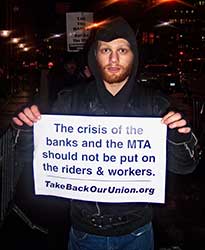

Nir brought up an excellent issue in class: why do MTA workers make so little when the fares continue to increase?
This Daily News editorial explains the connection between MTA (and the city’s) budget, Libor rate, and the financial crisis.


New York’s Sherpas on life after Everest
In our final two weeks of class, please try to write blog posts that are about New York, or at least tie them to New York in your discussions. This is the kind of story I have in mind.

 Check out this article on solutions to the housing crisis that we discussed in class.
Check out this article on solutions to the housing crisis that we discussed in class.

It seems that this issue comes up a lot in class, and I wanted to provide additional sources of information on how exactly quotas for detention beds are connected to deportation. Follow this link to see a list of recent media sources, as well as a compilation of articles.

Following up on Emily’s example of how race is thought of very differently in Africa than in the US – and our conversation about the tensions between understandings of race in Dominican Republic in the US, here’s an interesting interview with Chimamanda Ngozi Adichie precisely on the topic. Read her novel, Americanah (for pleasure or extra credit!).

The authors of our required text are having a free event on Wednesday, March 5. Attending this event is a good opportunity to earn extra credit.


Remember our discussion of ‘hot beds’ or people living in such crowded conditions that they take turns sleeping on the same bed?
Here are two articles that illuminate this problem.
This article in The Nation profiles a Bangladeshi immigrant in Queens who lives in an illegal cellar room. Apparently half a million New Yorkers live in such illegal cellar dwellings.
This article in New York Magazine profiles a Mexican immigrant who lives with 26 roommates in Manhattan. The photo above comes from that article.

Here are the slides from Joe Salvo’s presentation. It seems that the 51% figure we were discussing (thanks, Milan!) is actually people who speak English at home. Only 23% of New Yorkers are not English proficient. Here’s the full report.
About public assistance (from the report): “Overall, the percentage of native-born households receiving public assistance (4.5 percent) was similar to that for foreign-born households (4 percent).” Note that they are talking about households, not individuals. From the footnote: “Households with at least one person receiving public assistance were defined as receiving public assistance income.”
According to this excellent source of information on all things migration in the world, immigrants are more likely to be married than native-born people (nation-wide).
I have not found anything about hours worked per week, but I’ll keep looking. If you come up with interesting information or story, post it here even if it’s not your week.
